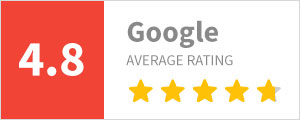You have no items in your shopping cart.
Blog
Various Ratings For Safety Glasses

It is very important to protect your eyes as you work. The safety goggles are meant to give eye protection against a variety of risks such as chemical spills, pollutants in labs, and heavy industrial work. It also helps in protecting the eyes from physical injury or illness that may occur as a result of exposure to numerous components in the surrounding environment. It is available in a variety of shapes and styles. As an added bonus, it is available with a variety of protective coatings, including scratch and UV protection as well as static and fog resistance.
Here the question comes up, how to find out the level of protection offered by safety glasses. One thing is certain, purchasing safety glasses is definitely worth an investment. By examining the rating of your glasses, you may determine which threats they are approved to protect you from. The combination of a few letters and digits on the protective eyewear indicates the type of eye protection that is being offered to the wearer. These letters and digits are represented by different pieces of legislation. This includes EN170, EN171, and EN172, to name a few examples.
Except for safety glasses that meet particular standards, conventional prescription eyeglasses do not qualify as safety glasses regardless of their size or the durability of the frame and lenses on them.
Occupational safety rules are established by the federal government in the United States with the goal of reducing the risk of on-the-job injury or illness. In the United States, the Occupational Safety and Health Administration (OSHA) is part of the United States Department of Labor and is in charge of workplace and educational safety policies.
According to the American National Standards Institute (ANSI), a private, non-profit organization that develops quality and safety standards for a wide range of products, OSHA has approved safety eyewear standards created by the American National Standards Institute (ANSI).
The American National Standards Institute (ANSI) standard for eye safety covers a variety of eye protection devices, including eyeglasses (both prescription and non-prescription), welding helmets, goggles, face shields, and full-face respirators, among others.
Standardization Of Safety Eyewear By The American National Standards Institute
The following major characteristics are included in the most recent version of the ANSI safety eyewear standards:
- Lenses are to be examined independently for the most fundamental impact tests (not mounted in a frame). For the high impact categorization, the frame and lenses are examined as a single unit, rather than testing them separately.
- When utilized for high-impact testing, non-prescription lenses are believed to be structurally weaker than prescription lenses manufactured of the same material; nonetheless, prescription lenses are often thicker than non-prescription lenses.
- Thinner prescription safety glasses are now permitted, provided that they meet the requirements for high-impact testing. For a long time, all prescription safety lenses were required to be at least three millimeters thick, which made them much larger and heavier than conventional eyeglass lenses.
- Safety lenses are now classified according to their level of impact resistance: basic impact and high impact.
- In order to determine the fundamental impact safety classification for lenses, the "drop ball" test is used. This test involves the dropping of an inch-diameter steel ball into the lens from a height of 50 inches, which is repeated several times. The lens must not fracture, chip, or break in order to pass. This test is required for all safety lenses made of glass. Only a statistical sample of a big batch of plastic safety glasses, on the other hand, is required for testing plastic safety lenses.
- The lens is subjected to a high-velocity test in high-impact testing, which is accomplished by firing a quarter-inch diameter steel ball at it at a speed of 150 feet per second. The lens must not fracture, shatter, or break in order to pass, and it must not become detached from the lens holder while being tested.
How to evaluate the ratings of safety glasses and goggles
There are many ways by which you can check the safety ratings of your prescription safety glasses. Check for the Plus mark In order to establish whether or not a lens has passed the high-velocity test described above. Look for the "+" symbol, which indicates that the lens has been approved for high impact.
There is no restriction on the use of this mark on any prescription lens that is the same or greater in thickness (measured at its thinnest point), is made of the same material by the same manufacturer, and has the same coating(s).
"V" and "S" symbols are also used. Other lens markings that appear on safety lenses include the letter "V" (which indicates that the lens is photochromic) and the letter "S." (indicating the lens has a special tint). Occasionally, a number may be written on a shaded safety lens to indicate how much light transmittance has been lowered as a result of the tint.
Those who deal with molten metal or in brazing, cutting, soldering, or welding operations should wear safety glasses with tint densities ranging from 1.5 to 3.0 (mild to moderate shade for torch soldering) to 10 to 14 (very dark shade for cutting and welding activities) (very dark shades for electric arc welding).
All safety lens markings must be permanent in order to be effective. if the lenses do not satisfy the high impact standard, a warning label that can only be removed by the wearer must be mounted to the prescription safety glasses.

Testing of safety eyeglasses and goggles frames and lenses
Frames for safety glasses are subjected to the same testing procedures regardless of whether they will be utilized in low-impact or high-impact situations. The following is an example of frame tests:
In this test, a steel projectile with a diameter of one inch and a weight of 17.6 ounces is dropped through a tube from a height of 50 inches into a safety lens that is mounted in a frame. A prosthetic head form "wears" the frame, which is made of steel. In order to pass, the frame must completely maintain the lens, with no piece of the frame component that holds the lenses becoming disconnected from the inner surface of the frame component that holds the lenses.
Now, the question arises how to test durability? As part of the durability testing, safety frames must pass flammability and corrosion resistance tests as well as other durability tests.
It is also important to check the Impact with a high rate of acceleration. It is necessary to shoot a quarter-inch steel ball at the lens and frame from a distance of slightly under 10 inches, at a velocity of 150 feet per second, in order to pass this test. A number of times (each time with a different frame and lens) the test is carried out at various angles and positions of impact. The pass requirements for the high mass impact test are the same as those for the low mass impact test.
Non-prescription safety eyewear with non-removable lenses must be permanently marked with the manufacturer's trademark and the letters "Z87" (basic impact) or "Z87+" (high impact) on either the front of the frame or one of the temples, depending on the severity of the impact. Prescription safety frames must be permanently marked with the manufacturer's brand and the letters "Z87-2" on the front of the frame as well as on both temples in order to be considered legal.
On the American National Standards Institute website, you can obtain a copy of the ANSI Z87.1-2003 safety eyewear standard, which contains comprehensive information.
What kind of protective eyewear do I need to wear at work?
Based on your job responsibilities, the safety officer at your firm should assess which level of protection (basic impact or high impact) is required. Examples of vocations requiring high levels of impact protection in eyewear include carpenters, plumbers, pipefitters, machinists, and laborers.
Side shields, goggles, or complete facial protection may be required for some activities. To identify which types of safety eyewear are best appropriate for different job positions, employers and safety officials should reference the Occupational Safety and Health Administration (OSHA). For more information, please see the OSHA website's section on the eye and facial protection.
Choosing safety eyewear that has been rated at the high impact standard for all activities is preferable if you operate as an independent contractor to ensure that you are working at an elevated level of safety.
Summing Up
Wearing safety glasses is very important to protect your eyes from various hazards. And what is more important is that you wear safety glasses that are of very high quality. To ensure that your safety glasses are made using high-quality material there are several safety ratings. In this article, we have talked about them. When you purchase a pair of safety goggles for yourself next time, do adhere to these guidelines.


